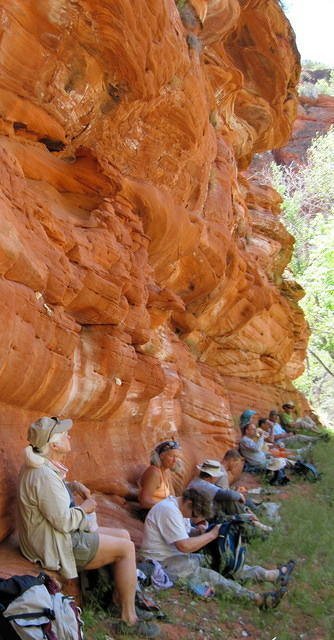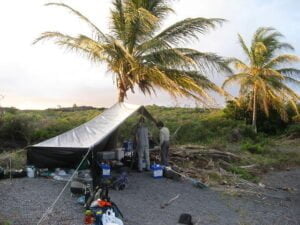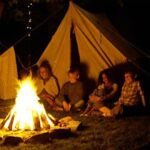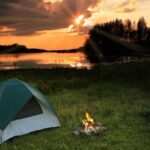Wilderness Volunteers is a wonderful organization that connects conservation-minded campers with public land agencies in order to make a difference. Their destinations range Alaska to Maine, West Virgina to New Mexico and every trip makes a noticeable impact as volunteers work to restore the wild woods.
In this interview, we speak with Dave Pacheco, Wilderness Volunteers’ Executive Director. If this interests you, check out their website and blog. They still have space in spring and summer trips. This could be a great new way for your Eagle Scouts or your family to go camping!
Tell us a bit about Wilderness Volunteers, its staff, and its operation.
Wilderness Volunteers is a nonprofit organization dedicated to organizing and promoting volunteer service to America’s wild lands. Our small staff of two runs the day-to-day operations. We recruit hundreds of volunteers each year to participate, in a meaningful, hands-on effort to protect, maintain and restore our remaining wild places.
We work directly with public land managers to identify on-the-ground projects where volunteers can make a difference. Once projects are identified, we assign two volunteer leaders to each of the 50+ projects we run yearly. The impact in just a single year of our program is staggering: involving roughly 400 volunteers who generate 20,000 hours of volunteer service worth an estimated $427,000 to government agencies.

How was Wilderness Volunteers founded?
Wilderness Volunteers was founded by Debbie Northcutt and John Sherman in 1997. Involved as lead volunteers with the Sierra Club Outings Program for several years, and witnessing the rising cost of this large organization’s programs, Debbie and John created a much smaller, leaner, cost-efficient organization to focus exclusively on volunteer service projects on public wild lands.
What is the mission of your organization?
Wilderness Volunteers mission is stewardship of America’s wild lands by organizing and promoting volunteer service in cooperation with public land agencies including the National Forest Service, National Park Service, Bureau of Land Management, and U.S. Fish & Wildlife Service.

Who leads the trips?
Two volunteer leaders head up each service project. Our leaders rise to these positions of responsibility by personally experiencing volunteer service as volunteer participants in an earlier project. They are regular people from all walks of life with varied backgrounds, typically outdoor-oriented, all seeking a means of experiencing wilderness while giving something back. They love spending a week getting to know a group of like-minded people, and tend to develop lasting friendships within our community.

What are some of the different opportunities available through the volunteer trips?
Volunteers who participate on Wilderness Volunteers projects conduct a variety of services, all prioritized and scrutinized for environmental impact by the public land agencies with whom we work. A regular opportunity is foot trail maintenance in all its forms; new trail construction, cutting back overgrown vegetation, installing and maintaining erosion control devices, building rock walls and steps, and re-routing trail around sensitive or difficult areas. We work with natural materials available on site; rocks, trees and soil.
Another typical opportunity involves working to remove invasive plants (weeds, shrubs or trees) from remote locations where they are choking out and replacing native vegetation. Our volunteers get involved in both the removal of the invaders and replacement with native plants in impacted areas.
Another typical opportunity is campsite restoration. As more and more people recreate in our wild places, illegal campsites follow. These are typically just people, yet to be educated, who throw down a tent and build a fire ring too close to sources of water and in sensitive or wet areas. Land managers carefully choose sites for tents in the backcountry and when unwanted sites pop up in sensitive areas, volunteers are tasked with eliminating them by disassembling fire rings, removing ash, and naturalizing with local materials.
What type of camping is usually involved in the trips?
Projects usually are backpacks that involve tent camping, but many also take place in established campgrounds that might involve either pitching a tent or camping in a vehicle. A few projects involve dormitory-style camping with more amenities, but these are not the norm.
What is expected of volunteers during a trip?
While on the project, all volunteers are expected to contribute to kitchen cleanup and meal preparation, and to maintain a healthy and clean group through regular hand washing. We expect volunteers to adhere to principles of Leave No Trace, which is the standard for conducting low impact camping and travel in the backcountry. Most of what we ask for though is to maintain a positive attitude, have fun and relax, and don’t forget to frequently look around at the surroundings and fully take in a full seven days in nature.

It’s amazing how much work can get done when an organized and enthusiastic bunch of volunteers get together. It’s really just a matter of amount because a group of 12 volunteers will contribute about 400 hours together during a week.
While most people are limited to weekend camping, signing up on a Wilderness Volunteers service project gets people out for a full week, offering greater opportunities for exploring and getting to know wild places. Participants typically return home from projects with a more personal sense of satisfaction and a spirit of “giving something back.”
Can you share some advice about how campers can work to conserve and improve the wilderness just during their standard camping trips?
First, contact your local public land manager office to research what volunteer needs are available. All have websites and all have local offices in the areas they manage. Stopping in and talking with a land manager should reveal a host of opportunities, and get you acquainted with their needs.
Second, learn, follow and practice principles of Leave No Trace. These principles carefully explain how to: plan and prepare ahead, camp and travel on durable surfaces, dispose of waste properly, leave what you find, minimize campfire and campsite impacts, respect wildlife, and be courteous of others.
Who is not eligible for a Wilderness Volunteers trip?
Participants must be 18 years or older, although with a parent, some 16-17 year old, physically capable youth are allowed. Otherwise, our eligibility standard is typically to match applicants with projects they are physically capable of performing. We screen participants to make sure past injuries or chronic medical conditions wouldn’t be a problem during the trip, either while backpacking or while performing the project. While most all participants are in good physical condition, a few are turned away based on difficulty level. For those folks, we attempt to find a more appropriate project to match them up with.
All photo are provided courtesy of Wilderness Volunteers. Check out the rest of their gallery to see more images of great trips!




1 Comment
What an amazing group of people. There should be one of these organizations in every state. Wonderful idea.